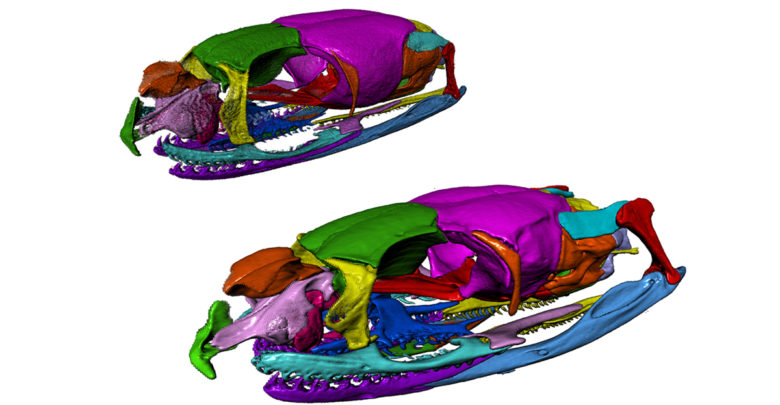 Supplied
SuppliedUtilizing micro-CT scanning technology, an undergraduate student at the University of Alberta has published a research study that could help find the evolutionary link between snakes and reptiles.
This August, undergraduate student Catie Strong and graduate student Tiago Simões, supervised by Michael Caldwell and Michael Doschak, published a research study on the developmental biology of Plains garter snakes in order to retrace their evolutionary processes and relationships. This makes them the first team to ever utilize micro-CT technology to image any snake or reptile skulls at various stages of their development.

Strong, lead author of the study and third-year paleontology student at the time of publishing, said this research was inspired by the absence of scientific knowledge on the relationship between snakes and reptiles.
“We’re still not really sure what group of lizards snakes really evolved from and how snakes fit into the larger lizard-snake evolutionary tree,” Strong said.
The group chose to study Plains garter snakes because their common and ordinary nature makes them ideal candidates for further in-depth study and analysis.
“Because they are so common, it’s really easy to overlook them and that there’s not anything important that they can tell us,” Strong explained. “Part of that decision was trying to give [garter snakes] the attention that they haven’t really been given previously by other researchers.”
The study employed micro-CT scanning technology in mapping out garter snake skulls. It functions similarly to a hospital CT scan, using X-rays to create 2D images or virtual “slices” of the subject, except with much more detail on a finer scale. The slices are then compiled together to create a 3D model that can be easily manipulated and studied.
With this technology, Strong and her fellow researchers were able to accurately identify and analyze microscopic structures within garter snake skulls at various stages of their development, and gain insight into their evolutionary path.
“We looked at the braincase (the upper-back part of the skull) in some aspects and how that develops,” Strong said. “We also looked at feeding mechanisms, like how the jaws and related parts of the skull develop, and we looked at some of the unique developmental pathways that we found present in the garter snake.”
Strong said she’s “really proud” and “grateful” for her research work on the study while being an undergraduate student and transitioning towards graduate school.
“It’s pretty rare for an undergrad to have this really hands-on experience and to get a publication out of it is amazing for me on a personal level.”




